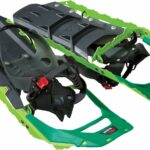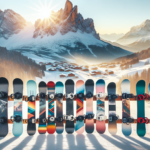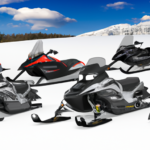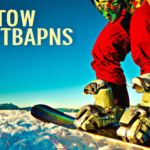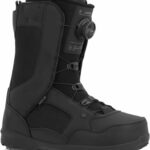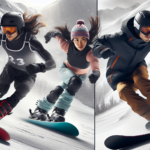Believe it or not, but there’s a fascinating interplay between snowboarding and surfing. This article, “Is Snowboarding Similar To Surfing?” takes a look at the surprising parallels and contrasts between these two adrenaline-fueled pastimes, drawing on their shared histories, techniques, and subcultures to explore if they are indeed birds of the same feather. Brace yourself for a ride through snowy slopes and gnarly waves as you evaluate the intriguing alliance of these two beloved sports.
Origins of Surfing and Snowboarding
Surfing and snowboarding, two adrenaline-fuelled sports, each have fascinating histories that explain their global popularity today. Starting in different corners of the world, with different cultures and traditions, they’ve managed to forge a bond. When you dive into the history and origins of these sports, you can understand why.
Historical background of Surfing
Centuries ago, ancient Polynesians concocted the concept of surf riding. Using wooden planks carved out from local trees, they discovered the thrill of riding the swells of the Pacific Ocean. It wasn’t merely a recreational activity; it was deeply woven into the social and cultural fabric of these communities. When Western explorers like Captain James Cook stumbled upon Hawaii in the 18th century, they were astounded to witness Hawaiians “walking on water”. With Western influence, surfing went through periods of oppression before eventually exploding in popularity during the mid-20th century, making its way to shores across the globe and becoming the sport we know and love today.
Historical background of Snowboarding
Snowboarding, on the other hand, is a relatively young sport. Its inception can be traced back to the 1960s in the USA, when an engineer named Sherman Poppen strapped together a pair of skis for his daughter to ‘surf’ in the snow. Little did he know that his backyard invention, known as the ‘Snurfer’, would morph into a global phenomenon. In the late 1970s, pioneers like Jake Burton Carpenter refined the design of the snowboard, launching an industry that would revolutionize winter sports. It wasn’t an easy ride though, facing resistance from ski resorts and traditional winter sports enthusiasts. However, the 1990s saw a boom in snowboarding’s popularity, eventually leading to its inclusion in the Winter Olympics in 1998.
Comparing the origins of both sports
Both surfing and snowboarding share the exhilaration of riding on a board, but interestingly, they originate from different historical timelines and backgrounds. Surfing rides on a wave of ancient history while snowboarding slides into our recent past. Both sports, however, have experienced periods of growth, resistance and ultimately acceptance, evolving into the mainstream and competitive sports that they are today.
The Fitness Level involved in Snowboarding and Surfing
Both sports demand a high degree of physical fitness while also offering excellent workouts. They might appear to involve different muscles given one is on water and the other on snow, but they are surprisingly similar.
Physical exertion in Snowboarding
Snowboarding is a full-body workout that demands core strength, flexibility, and endurance. Maneuvering through slopes and terrains requires lower body strength, while maintaining balance works your core muscles continuously. The high-altitude environment can also increase cardiovascular strain, making it a great way to improve your aerobic fitness.
Physical exertion in Surfing
Surfing also provides an all-round physical challenge. Paddling out to the lineup focuses on the upper body strength (especially shoulders and arms), cardiovascular fitness for those long hours in the water, and the core muscles needed for balance on the board. Not to forget the leg strength necessary for the powerful bursts of energy required in maneuvering the waves.
Comparison of fitness levels required
Looking at the fitness levels required for both sports, it’s clear that surfing and snowboarding are both physically demanding. Each sport targets broad muscle groups and builds balance, strength, and endurance, although they emphasize different areas. For example, snowboarding is more focused on the lower body and core while surfing relies more on upper body along with the core. Nevertheless, both require a high level of fitness to ride the waves or the snow.
Exploring the Techniques used in Snowboarding and Surfing
While the surfaces may differ, the foundational techniques for snowboarding and surfing have exceptional parallels. Both rely heavily on balance, body positioning, and reading the environment.
Basic movement techniques in Snowboarding
In snowboarding, your feet are bound to the board, and you’re navigating a downhill slope. You use your heels and toes, along with lateral body movements, to control the direction and speed while continuously adjusting your balance. Your gaze is always forward, directing your trajectory.
Basic movement techniques in Surfing
Surfers on the other hand, must paddle out to sea, and then stand up on a floating board to ride the breaking waves. A surfer uses their arms and upper body to paddle, pops up to a standing position, and then uses their body weight to maneuver the board on the wave.
Similarities and differences in techniques
Despite the differences, both sports require you to read the environment, adapt to changing conditions quickly, and use your whole body to control your path. The essential techniques of weight transfer, balance adjustments, and direction control are core to both sports. Nonetheless, the key difference is that while surfers have freedom of foot movement, snowboarders are strapped to their boards.
The Equipment used in Snowboarding vs Surfing
What you ride and what you wear are crucial elements of both sports. Both surfing and snowboarding require specialized equipment that is designed to suit the corresponding elements.
Snowboarding gear
Snowboarding necessitates a snowboard, bindings that secure your feet to the board, boots, and appropriate winter attire to shield against the cold. Helmets and goggles are also essential for safety and visibility.
Surfing equipment
For surfing, you need a surfboard that suits your ability level, weight, and the type of waves you want to surf. A surf leash is a crucial safety tool to keep the board attached to the surfer. Depending on the water temperature, you might wear a wetsuit, rashguard or even just surf shorts. Don’t forget the surf wax that is applied to the deck of the surfboard to ensure a good grip.
The similarities and contrasts in equipment and gear
Equipment-wise, snowboarding and surfing gear share similarities in principle (like the board), but the specifics are largely demarcated by the environmental aspects of each sport. Both sports require you to be properly equipped not only for performance but also for safety. However, while a snowboarding board has fixed bindings attaching you to the board, in surfing, you’re free to move on the board.
The Environmental Factors affecting Snowboarding and Surfing
The playing fields of snowboarding and surfing – mountains and oceans – are influenced by a range of environmental variables.
Weather and conditions for Snowboarding
For snowboarding, optimal conditions include a good snowfall making for soft rideable snow, clear visibility, and moderate temperatures. Avalanche risks, extremely cold temperatures and poor visibility can be significant challenges.
Weather and conditions for Surfing
Surfers, on the other hand, are at the mercy of the ocean’s whims. Wave quality depends on factors like swell direction and size, wind speed and direction, and tide levels. Hazards range from strong currents and riptides to sharp reefs and sea creatures.
Comparison of environmental impact on both sports
Both require you to work with nature, and environmental conditions significantly impact performance and safety. However, while snowboarding generally occurs in designated ski resorts, surfing happens in a more open environment, the ocean. Hence, surfers may experience more varied and sometimes unpredictable conditions.
Understanding the Skills needed for Snowboarding and Surfing
Although you could start either sport as a novice, each demands a unique skill set that requires time and practice to master.
Skills required for a snowboarder
Snowboarding skills include maintaining balance, controlling speed and direction, and learning falling techniques to avoid injuries. Moreover, skills related to navigating varying terrains, jumps, and turns are also crucial. In addition, snowboarders must learn to adapt to changing snow conditions.
Skills required for a Surfer
Surfing skills involve being able to paddle efficiently, read waves accurately, and perform the ‘pop-up’ to standing position. Surfers should also master maneuvering techniques like turning and carving. But perhaps one of the most challenging skills in surfing is the capability to ‘read’ the ocean – understanding wave patterns and sea conditions.
Comparing the skillsets of Snowboarding vs Surfing
While both sports demand balance, control, and maneuverability, the skill sets do diverge. In snowboarding, your feet are stationary on the board, and it’s more about control of speed and direction. Surfing, in contrast, involves more free movement, intense contact with the board, and the ability to read and adapt to the unpredictability of the sea.
Culture and Community of Snowboarding and Surfing
Forward-thinking and connected by their love for adrenaline, these sports’ communities are a reflection of the sports’ identities themselves.
The culture of the Snowboarding community
The snowboarding culture has deep roots in rebelling against the mainstream ski industry. Snowboarding’s rise is a story of young, adventurous, individuals pushing boundaries, and challenging the status quo, which reflects in today’s vibrant community. From lively après-ski scenes and adventurous backcountry explorations, to the spirit of innovation in gear and technique, it’s a culture that triumphs individuality and freedom.
The culture of the Surfing community
Surf culture, imbued with the laid-back vibe of beach life, is centered around respect for the ocean’s power. It’s a delicate balance of pursuing adrenaline-packed wave rides and cherishing the tranquil moments between sets. The surf community is a diverse mix of individuals, connected by their profound love for the ocean and the search for the perfect wave.
How culture and community compare in both sports
While snowboarders and surfers each have their own unique culture and community, these elements often mirror each other. Both communities value respect for nature, individualism, a sense of adventure, and camaraderie among peers. Regardless of whether they’re riding a wave or a snow slope, the shared mindset is all about the joy of the ride.
Risk and Safety Considerations in Snowboarding and Surfing
Like any extreme sports, both snowboarding and surfing come with their share of risks. However, being aware of these dangers and following safety rules can keep the fun-filled adventures safe.
Common risks in Snowboarding
Snowboarding risks include collisions, avalanches, frostbite, sunburn, muscle injuries, and sprains. Going off-piste can add another layer of risk, making an avalanche safety kit essential. Moreover, inexperienced riders or those attempting advanced tricks and jumps are more prone to injuries.
Common risks in Surfing
Surfing, too, can be a risky business. From dangerous impacts with the board itself and underwater hazards like rocks and reefs, to the risks posed by big waves and strong currents, there are numerous reasons to take care. There’s also the chance of unexpected meetings with marine life.
Comparing safety protocols in both sports
In both sports, prioritizing safety is paramount and can significantly decrease the risk of accidents. This includes using appropriate equipment, taking lessons, gradually increasing the difficulty level, staying in designated areas, and respecting the power of nature. Both rely on situational awareness and knowing your limits. The main difference lies in the type of risks, with snowboarding being more terrestrial and icy, and surfing risks being essentially marine and sometimes, biological.
Competitions and Recognition in Snowboarding and Surfing
What started as rebellious movement against the mainstream, both sports have earned their place in competitive platforms and drawn worldwide recognition.
Competitive Snowboarding
Competitive snowboarding takes various forms, from downhill races (boardercross) to freestyle events featuring tricks and jumps (halfpipe, slopestyle). The sport reached a defining moment when it was included in the Winter Olympics in 1998, which catapulted it into the global spotlight.
Competitive Surfing
Competitive surfing consists of athletes demonstrating their skills on waves, with style, complexity of maneuvers, and wave selection being crucial factors. The sport received significant attention when it was included in the Olympics for the first time in Tokyo 2020, further cementing its position on the world stage.
How competitions in both sports compare
Both snowboarding and surfing have evolved into widely recognized and respected competitive sports. Both emphasize on technique, creativity, and style, with competitions designed to highlight these aspects. Recognition in prestigious events like the Winter and Summer Olympics respectively, has raised the profile of snowboarding and surfing, making them more mainstream than ever.
The Future of Snowboarding and Surfing
As sports, snowboarding and surfing have seen substantial growth and evolution. The future for both look thrilling, with emerging trends signalling new possibilities for riders.
Emerging trends in Snowboarding
In snowboarding, a significant future trend is the shift towards environmentally-friendly practices. Eco-friendly equipment and sustainable resorts are gaining momentum. On the technical side, splitboarding – a board that can be divided into two ski-like parts for uphill travel – is opening up new backcountry possibilities.
Emerging trends in Surfing
In surfing, a major trend is the rise of artificial surf parks that produce predictable and repeatable waves, enabling more people to access and enjoy the sport. On the surfboard front, there’s a shift towards using more sustainable materials too.
Predictions for the future of both sports
Snowboarding and surfing undoubtedly have bright futures. The focus on sustainability in both sports speaks to their commitment to preserving the environments they so heavily rely on. Technological advances, like splitboards and artificial wave pools, are sure to continue pushing the sports forward, making them more inclusive and accessible. Whether it’s riding swells or carving through snow, the thrill of these sports is sure to attract new and enthusiastic participants in the years to come.
In conclusion, while surfing and snowboarding might appear different looking at the surface of it – one in the sea, the other on a mountain – they are remarkably similar. From their rebellious roots to their high-intensity workouts, the necessary balance and technique, shared ethos and risks, and their journey to mainstream acceptance and Olympic recognition, they share more common ground than the element they’re performed on. In essence, both sports capture the equilibrium of freedom and control that is characteristic of riding, whether it’s a wave or a mountain.
- What Snowboard Bindings Should I Get? - January 23, 2024
- What Size Screws For Snowboard Bindings? - January 23, 2024
- How To Snowmobile On Water? - January 23, 2024

